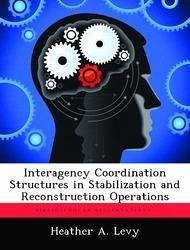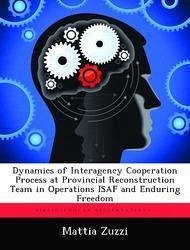Nicht lieferbar

Stability and Reconstruction Operations Planning: Embrace before Pursuing the Interagency
Versandkostenfrei!
Nicht lieferbar
The execution of the post-hostilities phase of Operation Iraqi Freedom has prompted many to ask did why the U.S. military plan so poorly for stability and reconstruction operations (SRO)? Many studies have suggested that the lack of interagency coordination within the U.S. government was the cause of poor SRO planning and execution. However, detailed analysis of the nature of military operations, the military's responsibilities, and the limited capacity of agencies within the U.S. government point to a different reason; a reluctance on the part of the military to consider SRO a core competency...
The execution of the post-hostilities phase of Operation Iraqi Freedom has prompted many to ask did why the U.S. military plan so poorly for stability and reconstruction operations (SRO)? Many studies have suggested that the lack of interagency coordination within the U.S. government was the cause of poor SRO planning and execution. However, detailed analysis of the nature of military operations, the military's responsibilities, and the limited capacity of agencies within the U.S. government point to a different reason; a reluctance on the part of the military to consider SRO a core competency. Therefore, in the near term the solutions to improving the ability of the military to plan and execute SRO are to be found inside the military, not through improvements in interagency coordination. To reach the conclusion that the military ought to focus internally rather than pursue improvements to interagency coordination requires the recognition that the military's ability to plan and perform SRO tasks consists of several interrelated dimensions. The first dimension requires the definition of SRO as a basis for developing a list of associated SRO tasks. The second dimension is the current process used to plan SRO and the assignment of responsibility for SRO tasks. Investigating the second dimension reveals the potential contributions from the interagency, specifically, the potential contributions from organizational initiatives like the JIACG and the S/CRS. The last dimension consists of the universe of organizations that have the capability to conduct SRO tasks. The analysis of this dimension reveals the requirement for military forces to conduct SRO tasks. Ultimately, the analysis shows that SRO and combat are closely related. Therefore, military plans should address both from the onset instead of sequentially. Additionally, planners should focus on the transition to civilian control rather than the end of combat operations. This is so because the military is likely the








